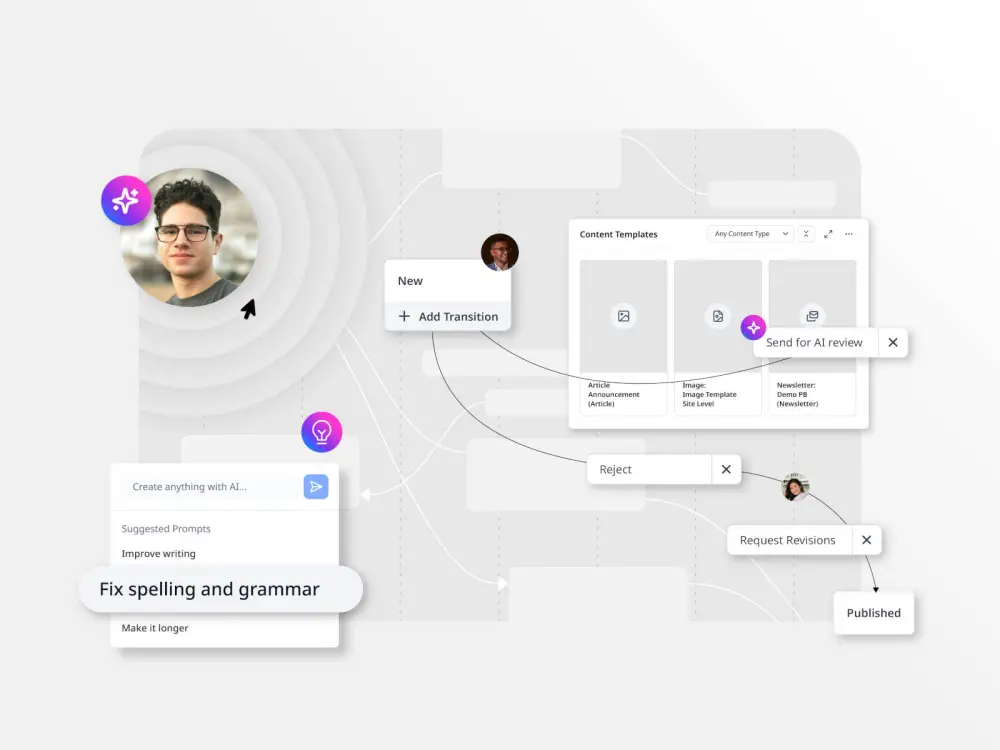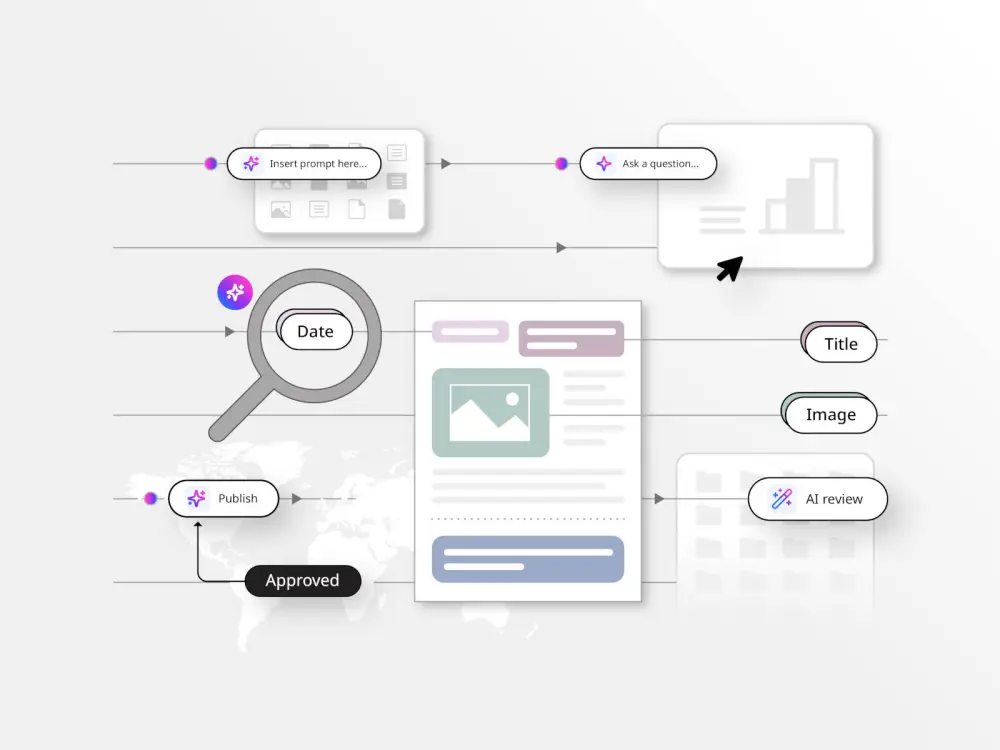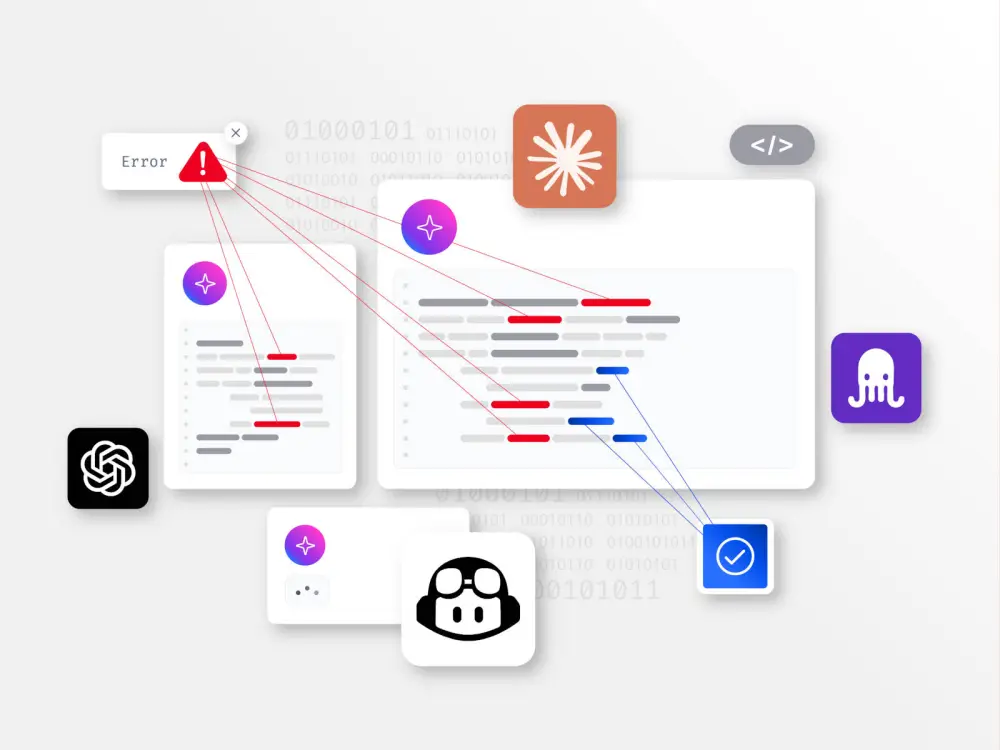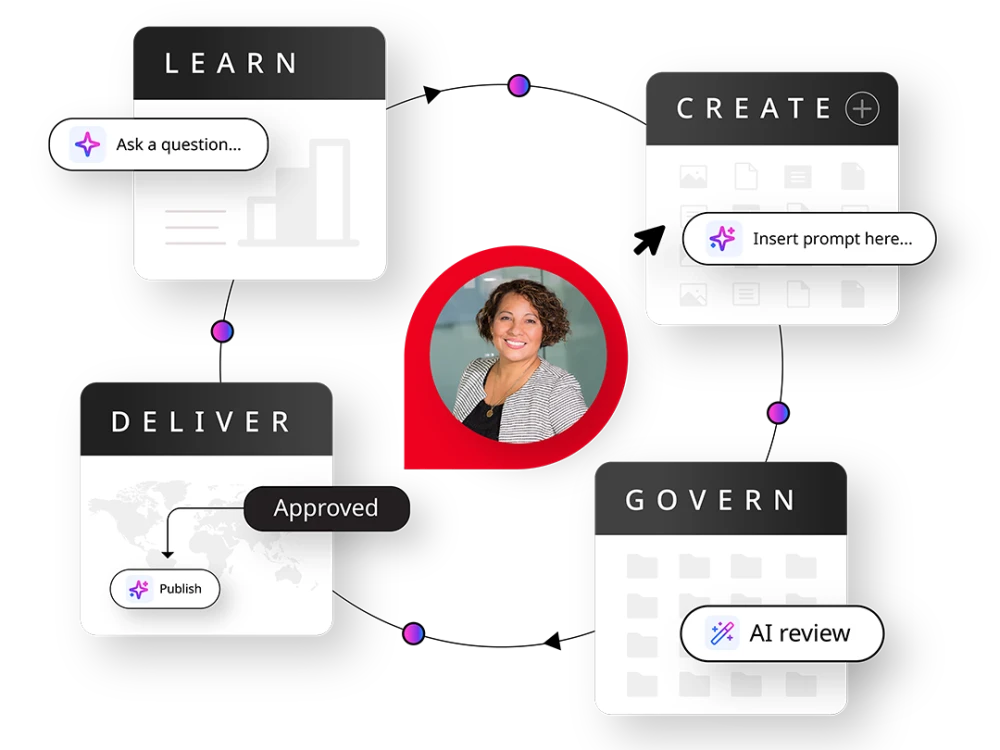Hallucination rate
Hallucination rate measures how often AI tools generate false or misleading information about your brand. It’s a key KPI for protecting trust, accuracy and reputation in AI-generated responses.
If you’ve spent any time playing with AI tools, you know the dirty secret: sometimes, they just make stuff up.
This is what we call hallucination, when an AI confidently generates false, fabricated or distorted information. And when it happens with your brand, it’s not just awkward — it can be dangerous.
That’s why hallucination rate is becoming a critical KPI for content teams to monitor.
Hallucinations happen when:
- The model lacks sufficient high-quality data about your brand: If AI can’t find enough real information, it starts guessing.
- Conflicting information exists online: Outdated, inaccurate or contradictory content can confuse models.
- Complex or niche topics aren’t well covered: If your brand plays in a highly specialized space with limited online material, AI may overgeneralize or fabricate missing details.
- Prompts trigger overconfidence: The way users phrase questions can lead models to “fill in the blanks” even when they don’t have solid source material.
- Brand risk: AI-generated misinformation can erode trust, damage reputation or create false expectations.
- Content quality signal: High hallucination rates suggest your brand doesn’t have enough clear, authoritative digital content for AI to anchor its responses.
- Legal exposure: In regulated industries, false AI-generated claims about products or services could have compliance implications.
- Control the narrative with high-quality content: The more accurate, detailed and widely distributed your official content is, the harder it becomes for AI to hallucinate.
- Publish definitive resources: Create authoritative assets: product documentation, in-depth FAQs, public data sheets and thought leadership that cover key facts AI models might need.
- Monitor and correct misinformation online: Use tools to flag inaccuracies in forums, review sites or competitor content that might confuse models during training.
- Seed trusted third-party references: Contributing to industry publications, podcasts or government registries can help reinforce facts about your brand that AI models pull from.
Run prompt audits across LLMs and ask direct, fact-based questions about your company, product, features, leadership, or pricing. Use prompts like:
- “What does [brand] offer in its enterprise product?”
- “Who is the CEO of [brand]?”
- “How much does [brand]’s product cost?”
Evaluate answers for factual accuracy and flag instances of:
- Incorrect product descriptions or capabilities
- Made-up stats, quotes, or leadership names
- Misattributions or competitor confusion
Assign hallucination outcomes per response:
- Yes = hallucinated content present (false info, made-up details)
- No = factually accurate, or aligned with known public information
Log the hallucination pattern to identify gaps in your content strategy. Use this data to improve clarity and coverage of facts across public content and third-party references.





